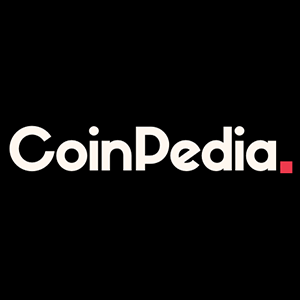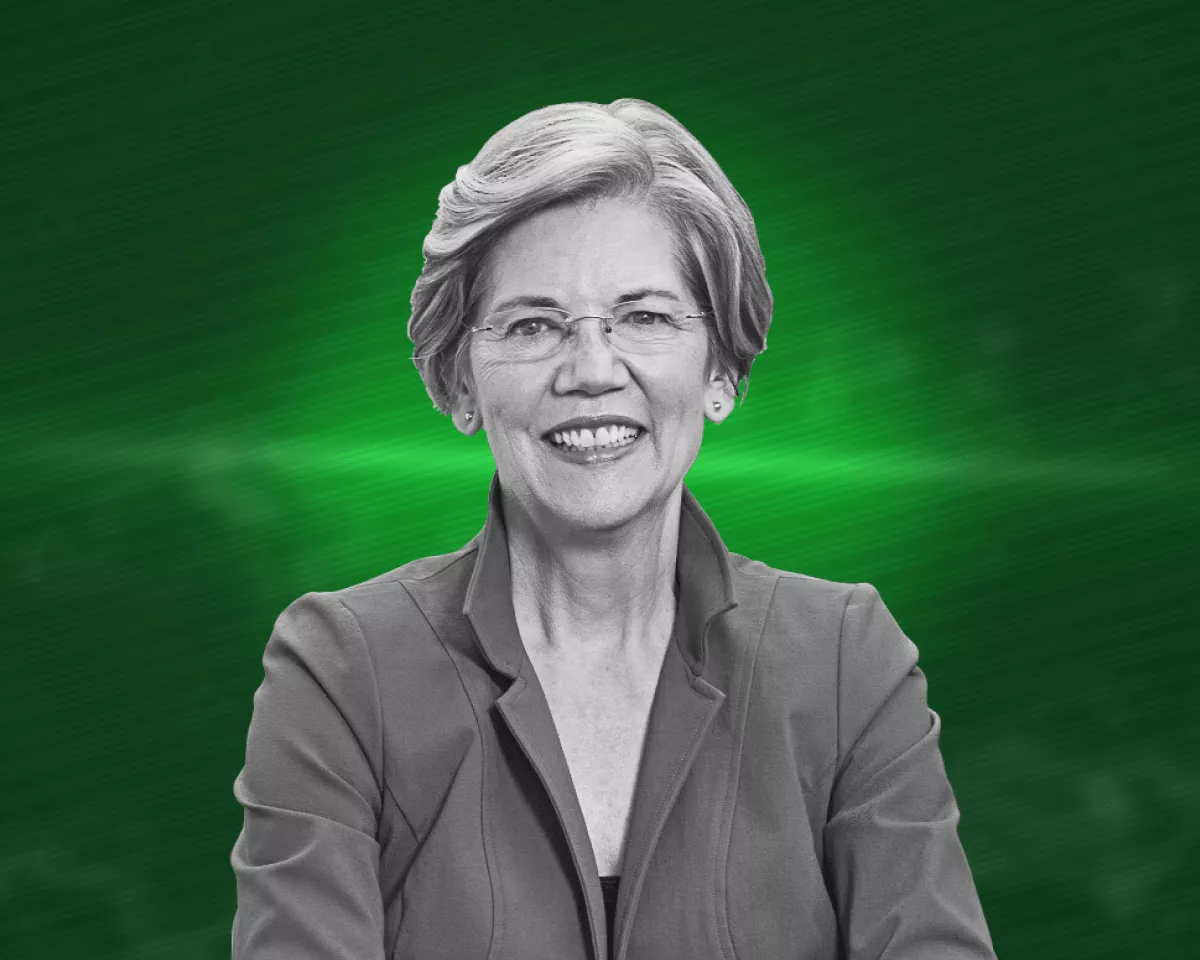VanEck Mid-September 2024 Bitcoin ChainCheck: 1-Year Review Edition
Summary Bitcoin's performance surpasses nearly every other major asset class, but some investors have been spooked by the recent drawdown. We examine the current state of the Bitcoin blockchain. Bitcoin’s adoption as an investment vehicle isn’t driven by the same forces today as in 2023 when it rose 155%. Digging into broader market correlation and volatility data, we observe signals that suggest a potential breakout, marking the end of the summer doldrums that have defined Bitcoin’s post-halving price action. We review Bitcoin’s fundamentals, adoption, correlations, and volatility while exploring the potential impact of Fed rate cuts and the U.S. elections. Please note that VanEck has exposure to bitcoin. Bitcoin's (BTC-USD) YTD (+36% as of 9/16) performance surpasses nearly every other major asset class (again), 1 but some investors have been spooked by the recent drawdown, a ~21% correction from the March peak. In this note, we examine the current state of the Bitcoin blockchain, including its recent fundamentals, correlation with other assets, volatility, ETP traction, our take on the likely impact of the U.S. election, and express our more global view on the role of decentralized networks in increasingly censored digital landscapes. Bitcoin Fundamentals As of September 16th, 2024 7-day Average 365 day change (%) Last 30 days Percentilevs all-time history (%) Bitcoin Price $58,584 124 96 Bitcoin Dominance 56% 15 81 Unrealized profit/loss ration 0.46 106 67 Bitcoin Daily Trading Volumes ((USD)) $28,897,783,504 173 n/a Daily Inscriptions 23,170 -93 41 Daily Active Addresses 725,109 -34 96 Avg Fees ((USD)) $0.77 -52 55 Total Transfer Volume ((USD)) 57,892,857,781 202 84 Total Crypto Equities' Market Cap * ((USD)) (MM) $112,040 87 67 Transfer Volume from Miners to Exchanges ((USD)) $1,802,327 -60 68 Sources: Glassnode, Artemis.xyzs of 9/16/2024. Past performance is no guarantee of future results. Regional Trading YTD Average ($) 2023 Average ($) 2022 Average ($) 2020 - 2021 Average $) Asia Hours Price Change MoM ($) -192 494 -988 -418 US hours Price Change MoM ($) 1,080 1,158 -930 1,299 EU hours Price Change MoM ($) 1,005 462 -721 -834 Sources: Glassnode, Artemis.xyzs of 9/16/2024. Past performance is no guarantee of future results. We begin our analysis with the tables above, which reveal how Bitcoin’s key fundamentals have changed over the past year. Twelve months to date, bitcoin’s price is up 124%, outperforming nearly every major asset class. Even within crypto, BTC has outperformed. Bitcoin dominance, a measure of Bitcoin’s market cap versus crypto’s total market cap, is up 15% YoY to 56%. There is clearly much more interest in Bitcoin and digital assets today than one year ago. Bitcoin trading volumes have grown 173% YoY, significantly outpacing equity trading volumes, up ~18% YoY. Although price returns for equities have been great, capital formation has been dismal. Capital raised from global equity IPOs is on a $68B pace for 2024, a 31% decline vs. 2023. The number of IPOs is on pace to fall by 42%. (For context, $748B was raised in 4,000 IPOs in the debt-fueled 2021 bonanza). Among private transactions, U.S. Venture Capital invested is up 9% y/y, while Crypto VC flows are up 87% over the same period. Bitcoin’s adoption as an investment vehicle isn’t driven by the same forces today as in 2023 when it rose 155%. Then, Bitcoin inscriptions were a viral innovation enabling users to store media files directly on the Bitcoin blockchain. Inscriptions ushered in a viral new wave of blockchain-based art, notably bringing retail liquidity and trading fees to the Bitcoin blockchain, which was previously left out of the NFT craze of the last market cycle. Like previous NFTs, however, the trend ended in a crash, reflected by the 93% YoY drawdown in daily inscriptions transactions. The decline in inscriptions undoubtedly explains the 34% and 52% YoY declines in daily active addresses and transaction fees, respectively. With Bitcoin’s on-chain activity diminished, bitcoin’s price appreciation this year is better explained by growing adoption as money: a vehicle for storing and transferring value. Despite fewer on-chain retail transactions, USD-denominated on-chain Bitcoin transfer volumes are up 202% YoY, implying larger overall ticket sizes. In parallel, despite lower fees, Bitcoin-related equities are capturing value by facilitating the growth of its monetary network’s adoption, with their collective market cap up 87% YoY. Based on month-over-month (MoM) price changes by region, the long-term trend of Asia selling BTC to North America continued in 2024, with investors enjoying outsized benefits during US trading hours. Bitcoin Miner Behavior 2024 has been a terrible year for Bitcoin Miner fundamentals. The Bitcoin Hashprice, a unit of profitability in the industry that measures the revenue earned for each one trillion cryptographic hash calculations per second, is down 97% y/y, far exceeding its 10-year CAGR of 69%, otherwise known as Bitcoin Miners’ “melting ice cube.” However, publicly traded miners entered the year reasonably well-capitalized, and with their low power costs and benefits of scale, now control 27% of the Bitcoin hash rate (a measure of total compute power securing the network), compared to 15% back in 24% a year ago and 15% in 2022. Now, with the halving well behind us, USD-denominated transfer volumes from miners to exchanges (a proxy for selling pressure) are down 60% YoY, indicating that miners have weathered the halving event and are now in financial solid positions - especially when considering the recent emergence of AI growth strategies. Let’s dig deeper into the hash rate and the post-halving action. Following the halving on April 19th, the 7-day moving average of Bitcoin’s hash fell ~15% from its all-time high of 650 EH/s to 552 EH/s by June 28th, in line with what we predicted before the event. This period corresponds to miners continuing to sell BTC, presumably indicating the forced exit of weaker, less efficient players. By July 26th, however, the network hash rate had rebounded to reach a new all-time high of ~670 EH/s, indicating that these more well-capitalized miners filled the void by increasing capacity. With today’s mining difficulty at all-time highs, miners compete harder than ever for their share of the network’s block rewards. However, the most recent data show that miners have begun accumulating bitcoin holdings for the first time since the halving. Aggregate BTC Supply Held by Miners Increased for the First Time since the Halving Source: Glassnode as of 9/13/2024. Observing the divergence in miner behavior has been fascinating and relevant to share performance. Some miners like CleanSpark (CLSK), Cipher Mining (CIFR), and Marathon Digital ( MARA ) are leveraging their strength by aggressively increasing their BTC positions. Generally, those are underperforming. A handful of others, notably Core Scientific (CORZ), Bit Digital (BTBT), and Hut 8 (HUT), have reduced their holdings to pay off debts, upgrade their fleets, and pursue new business opportunities. Some Publicly Traded Miners Adjust BTC Holding Strategies, Anticipating BTC Price Action & New Business Opportunities Source: Company Filings, Monthly Production Reports as of 9/10/2024. Past performance is no guarantee of future results. Some bitcoin miners are increasingly capitalizing on a new revenue opportunity by entering the AI and high-performance computing (HPC) markets. AI “hyperscalers” are placing a premium on access to near-term power due to bottlenecks in grid expansions, cloud computing’s strong pricing power, and the resulting power capacity arms race. CORZ, for example, has secured multiple contracts with AI hyperscaler CoreWeave, which is projected to generate over $4.7 billion in revenue by providing 382 MW of infrastructure over the next 12 years. This compares to the company’s last 12 months’ revenues of $574M. While miners’ pivot to AI is a time arbitrage opportunity in the near term, it may also prove to be a long-term strategic advantage by dampening revenue volatility and lowering the cost of capital for miners. Our previous research estimates that if 20% of miners’ energy capacity is allocated to AI/HPC, the total additional yearly profits could exceed $13.9 billion for a cohort of companies who collectively lost $350M net over the last 12 months. We see substantial value in this strategy. Historical Context of The Halving 143 days post-halving, bitcoin is overdue by historical standards to reach and sustain prices above its price at halving. Below, we explain why we think a catch-up rally is the most likely outcome. The TLDR is that bitcoin’s price lags behind previous cycles due to a mix of election anxiety and specific sales by entities unlikely to repeat. Meanwhile, the most important adoption from our perspective, that of nation-states, is accelerating. We will explain this in detail below. History Suggests Logarithmic BTC Price Growth Post-Halving Source: Glassnode as of 9/12/2024. Past performance is no guarantee of future results. Rising Institutional & Sovereign Adoption Growth Drivers The diverging trends between Bitcoin’s on-chain activity and its growth as an investment vehicle can be attributed to two main forces: institutional adoption and the increasing involvement of sovereign nations in mining and cross-border trade. First, driven by technical abstractions and regulatory improvements (e.g., custody solutions, ETPs), individuals and corporations increasingly gain exposure to Bitcoin without touching the blockchain themselves. Second, there is a growing trend of countries adopting Bitcoin for monetary and trade purposes. Combined, these trends are shifting the dynamics of both Bitcoin’s on-chain fundamentals and off-chain markets. Clearly, institutional adoption has increased. Since launching in January of this year, bitcoin ETPs gained over $19 billion in new inflows from hedge funds, RIAs, insurance companies, and pension funds through August. However, while hedge fund holdings of bitcoin ETPs grew 38% in Q2, RIA bitcoin ETP holdings only grew 4%. 2 Full-service, national brokerage (so-called ‘Wirehouse’) adoption of bitcoin ETPs has clearly been slower than some hoped. We attribute this to a lack of updated “60/40” macro model portfolios that include bitcoin. While we believe this “sell-side” research will eventually materialize, some managers are increasingly marketing and distributing “all in one” or model portfolios incorporating bitcoin. While we wait for potentially more aggressive allocations from brokers like Morgan Stanley and UBS, it is possible that their hesitancy may accelerate market share losses to independent advisors and vertically integrated models. We will closely watch institutional inflows or outflows into crypto, as these can serve as leading indicators of broader market sentiment. Shifting focus from institutional to sovereign adoption, seven nations are now mining bitcoin with direct support from the national government, with three new entrants this year (Ethiopia, Kenya, and Argentina). We believe this trend is a key indicator of the global shift towards de-dollarization. For example, Russia's pilot of cross-border trade denominated in crypto raises questions about which nations might follow suit, especially when the war inevitably ends. The implications for Bitcoin are significant, as government-level mining and cross-border crypto transactions could bolster Bitcoin’s role as a global reserve asset, as we wrote about in recent research . As de-dollarization gains momentum, we anticipate more countries and increased governmental involvement in digital assets, especially Bitcoin. Asset Correlations & Volatility Do Sharp Deviations in BTC and Nasdaq’s Correlation Predict a Shift in BTC’s Price? Source: Bloomberg as of 9/11/2024. Past performance is no guarantee of future results. Digging into broader market correlation and volatility data, we observe signals that suggest a potential breakout, marking the end of the summer doldrums that have defined Bitcoin’s post-halving price action. After a sharp decline, BTC’s correlation with the Nasdaq printed a local bottom on March 13th - the day of Bitcoin’s all-time high. Six months later, the correlation between these assets peaked on September 6th. This peak coincides with bitcoin miners’ slowdown in coin selling and a 3+ year high in long-term holders adding to their BTC positions. We think this might indicate a possible shift in market structure. Long-Term BTC Holders Ended the Summer by Buying BTC at Record 3Y Rates Source: Glassnode as of 9/11/2024. Past performance is no guarantee of future results. On the topic of correlation, such a focus among clients, we want to highlight that despite the rising daily correlation in recent months, our analysis revealed a weak Pearson correlation of -0.056 between bitcoin’s daily price changes and its 90-day correlation with the Nasdaq over the 365 days leading to September 10th, 2024. Why is the Pearson Correlation important? To explain this, imagine two runners (bitcoin and the Nasdaq) running side by side. Regular correlation shows that they generally move in the same direction - speeding up or slowing down together over time. However, Pearson correlation looks at the details, such as how closely their individual strides match each other. Even if they’re running in the same general direction, their steps might not align. One runner could have uneven, unpredictable steps while the other moves more consistently. In this case, bitcoin’s daily price changes are like those uneven steps, which don’t strongly influence how closely it tracks the Nasdaq in the long term. We believe these headline correlations exaggerate the real connection between Bitcoin and Nasdaq, especially when focusing on short-term fluctuations. As we look ahead, volatility remains a key factor in determining bitcoin’s near-term price action. By comparing the annualized volatility of bitcoin and other major assets, we can gain insight into how Bitcoin’s current stability fits into broader market trends. For example, while BTC and ETH are trading close to their 1Y average volatility, traditional assets like the S&P 500, Nasdaq, and JPY are experiencing higher-than-usual vol. This divergence suggests to us that Bitcoin may be poised for a breakout from its current pattern. The S&P 500, Nasdaq’s, and JPY’s Current Volatilities are at Relative 1Y Highs Compared to BTC’s, ETH’s, and Gold’s Source: Bloomberg as of 9/11/2024. Past performance is no guarantee of future results. Volatility refers to the fluctuation in the returns of an asset or portfolio as measured by the standard deviation of returns. The question, of course, is whether bitcoin’s next volatile move will be to the upside or downside. We note that a combination of entity-specific selling and political uncertainties have kept most of the risk-on capital that typically flows to bitcoin sidelined. In July and August, the German & U.S. governments transferred 62k bitcoin to exchanges, presumably for sale, while Mt. Gox and Gemini bankruptcy distributions totaled another 124k bitcoins. That’s $11B in non-repeatable sales, roughly equivalent to the net inflows to bitcoin ETPs in the first two months of trading. The market’s cautious risk appetite has instead favored tech companies like Nvidia ( NVDA ), which has driven outsized returns for the Nasdaq. However, we believe that much of the fear surrounding carry trade unwinds and election outcomes are largely priced in. Thus, we anticipate the bitcoin breakout will be bullish, with the upcoming debt ceiling deadline on September 30th and the approaching U.S. Presidential Election the most obvious catalysts for upside volatility. Furthermore, while BTC’s correlation with the Nasdaq fluctuates, its more consistent inverse correlation with the USD offers a more logical and persistent explanation for its outsized performance. As illustrated in the chart below, the low interest rates, quantitative easing, and money printing of 2020 only intensified this process. More simply, in the parlance of that era, “money printer go brrr.” Impact of the Fed & U.S. Elections Intensified by 2020’s ‘Money Printing’, BTC is Persistently Negatively Correlated with USD Source: Bloomberg as of 9/11/2024. Past performance is no guarantee of future results. Fed Rate Cuts Both the Fed’s upcoming rate decisions and the U.S. presidential election present significant potential impacts on the digital assets space. Suppose the Fed continues cutting rates in response to slowing economic growth. In that case, it may be bullish for risk-on assets like bitcoin, which may once again benefit as investors seek high-return alternatives to low-yield bonds. As we have illustrated, digital assets have shown a strong correlation to a weak dollar and money supply growth (global liquidity), making them particularly sensitive to shifts in monetary policy. Investors should also closely monitor the actions of other central banks, as the Bank of Japan’s recent mere 0.25% interest rate hike caused cascading liquidations due to over-levered carry trades unwinding around the globe. While such events clearly threaten the near-term risk appetite for Bitcoin and other digital assets, we think they reveal the weakness underlying today’s fiat currencies and thus underscore the rising popularity of decentralized monetary assets like bitcoin and gold. U.S. General Election On the political front, we think that while Kamala Harris and Donald Trump are bullish for Bitcoin, each presents more nuanced implications for the broader digital asset markets. Both administrations will likely maintain fiscal spending if not further accelerate, which could lead to further quantitative easing - especially if exacerbated by anti-business policies. Suppose Kamala Harris were to retain Gary Gensler as SEC Chair or align closely with the Elizabeth Warren wing of the Democratic Party when it comes to finance policy, which looks increasingly likely. In that case, the digital assets industry generally is expected to confront a tightening regulatory environment that would dampen institutional adoption of digital assets in the U.S., further restricting domestic entrepreneurial activity. On Bitcoin alone, however, we would argue that a Kamala Harris presidency might be even better for Bitcoin than a second term for Trump because it would, in our view, accelerate many of the structural issues that drive Bitcoin adoption in the first place. You can find our explanation of those issues in this research . Should that happen, Bitcoin’s unique regulatory clarity will likely make it even more competitive than other digital assets. Conversely, we believe a Trump presidency is generally bullish for the entire crypto ecosystem, as it would likely produce more deregulation and business-friendly policies - perhaps particularly so for crypto entrepreneurs, who regulators have increasingly scrutinized in the past four years. Regardless of the election outcome, the trend of growing fiscal deficits and rising national debt will likely continue. This suggests a weakening of the U.S. dollar, a macroeconomic environment in which Bitcoin has historically thrived. Decentralization: A Global Need Through a broader political lens, 2024 has seen escalating global efforts to police online speech, with growing implications for financial freedom. Australia's just- proposed Misinformation Bill is a prime example of how spreading information that undermines public confidence in the banking system could become illegal. Given that Australian banks have increasingly frozen customer accounts in recent years, this law raises the chilling possibility that if your bank freezes your account, discussing it could make you a criminal. This highlights how far-reaching and ambiguous such attempts to police misinformation can be. Similar laws have been passed in other countries, such as Brazil’s Fake News Bill, which led to the ban of X (formerly Twitter) in September 2024 due to the platform’s failure to meet transparency requirements. In Canada, platforms like Meta ( META ) have already blocked access to news in response to legislation. Privacy-focused platforms like Telegram are under scrutiny. After Telegram’s founder Pavel Durov was arrested in France, the platform updated its FAQ to reflect more aggressive content moderation policies and a potential new law enforcement reporting system. Country Bill Name Status Language That Policies Free Speech Practical Impact Date Passed Australia Misinformation Bill Proposed Speech causing "harm to public confidence in the banking system" is targeted. Fines up to 5% of global revenue. Potential to stifle legitimate debate. TBD Brazil PL 2630/2020 (Fake News Bill) Passed Platforms must remove "harmful content", especially around elections and public health. X was banned in Brazil in September 2024 for non-compliance with transparency and legal requirements. Jul-20 Canada Bill C-1B (Online News Act) Passed Platforms must compensate Canadian publishers for sharing news content. Meta blocked all news access in Canada; Google threatened to do the same. Jun-23 UK Online Safety act Passed Platforms must remove "harmful content" and ensure age-appropriate experiences for children. Fines up to £18 million or 10% of global revenue. TikTok faced scrutiny over child safety. Jan-24 EU Digital Services Act (DSA) Passed Requires platforms to remove illegal content, including hate speech and "disinformation". Expanded in 2023 to cover Big Tech platforms (45M+ users), imposing fines of up to 6% of global revenue. Nov-22 Hong Kong Name Pending - Financial Services and Treasury Bureau AI Guidelines Framework In Preparation No specific language yet. However, Western AI models are reportedly unavailable. We think this is likely due to fears of uncensored (e.g., pro-democracy) LLM content emerging. Restricts access to unfettered information for those in HK, threatening competitiveness. Per a Bloomberg News report, most companies did not respond to queries on the topic, and only Google confirmed Gemini AI is unavailable. TBD Source: VanEck research as of 9/17/24. As Big Tech withdraws from key markets to avoid liability, the fragmentation of information and rising criticisms about “fake news” appear to be an inevitable result. Indeed, we argue that the ideological and political capture of centralized internet behemoths like Google threatens individuals’ access to credible and independent information. Earlier this year, when asked to generate historically accurate depictions of 18th-century British royalty, Google’s newly released AI produced images of Asian and Black kings. When asked to create an image of "crypto programmers being bros in a sparse office," it refused, stating that the request furthered “harmful stereotypes” about "brogrammers.” These walled garden AI offerings are not credible, and we believe there is considerable white space for open-source competitors to gain share, many of whom use crypto tokens to bootstrap their networks. Conclusion We believe Bitcoin's long-term growth is driven by powerful, enduring mega-themes: the rising need for decentralized, censorship-resistant networks, growing institutional adoption through ETPs and model portfolios, and increasing sovereign involvement in mining and cross-border trade. As inflation and currency devaluation continue challenging fiat monetary systems, bitcoin can serve as a vital hedge. Demographically, Bitcoin enjoys strong support from younger generations, positioning it to potentially benefit as Boomer wealth turns over. As these structural forces deepen, bitcoin’s role as a global reserve asset continues to strengthen, reinforcing our conviction that the long-term Bull Market is intact. Notes: Net unrealized profit/loss ratio (NUPL) can be calculated by subtracting the realized market cap from the market cap and dividing the result by the market cap. When a high percentage of Bitcoin’s market cap consists of unrealized profits, it can be interpreted that investors are greedy. Background reading here . DISCLOSURES Source 1 : Bloomberg as of 9/15/24. Source 2 : Corporate Bitcoin Adoption Report - Final Draft . Coin and Index Definitions Bitcoin ( BTC ) is a decentralized digital currency, without a central bank or single administrator, that can be sent from user to user on the peer-to-peer bitcoin network without the need for intermediaries. Ethereum ( ETH ) is a decentralized, open-source blockchain with smart contract functionality. Ether is the native cryptocurrency of the platform. Amongst cryptocurrencies, Ether is second only to Bitcoin in market capitalization. S&P 500 Index : Representing 60% of the equity portion. The S&P 500 is a market-capitalization-weighted index of 500 leading publicly traded companies in the U.S. Bloomberg Barclays US Aggregate Bond Index : Representing 40% of the bond portion. The Bloomberg US Aggregate Bond Index is a broad-based benchmark that measures the investment grade, US dollar-denominated, fixed-rate taxable bond market. The index includes Treasuries, government-related and corporate securities, fixed-rate agency MBS, ABS and CMBS (agency and non-agency). Nasdaq 100 Index: is comprised of 100 of the largest and most innovative non-financial companies listed on the Nasdaq Stock Market based on market capitalization. The U.S. Dollar Index ( DXY ) measures the value of the U.S. dollar relative to a basket of global currencies. Risk Considerations This is not an offer to buy or sell, or a recommendation to buy or sell any of the securities, financial instruments or digital assets mentioned herein. The information presented does not involve the rendering of personalized investment, financial, legal, tax advice, or any call to action. Certain statements contained herein may constitute projections, forecasts and other forward-looking statements, which do not reflect actual results, are for illustrative purposes only, are valid as of the date of this communication, and are subject to change without notice. Actual future performance of any assets or industries mentioned are unknown. Information provided by third party sources are believed to be reliable and have not been independently verified for accuracy or completeness and cannot be guaranteed. VanEck does not guarantee the accuracy of third party data. The information herein represents the opinion of the author(s), but not necessarily those of VanEck or its other employees. Index performance is not representative of fund performance. It is not possible to invest directly in an index. Investments in digital assets and Web3 companies are highly speculative and involve a high degree of risk. These risks include, but are not limited to: the technology is new and many of its uses may be untested; intense competition; slow adoption rates and the potential for product obsolescence; volatility and limited liquidity, including but not limited to, inability to liquidate a position; loss or destruction of key(s) to access accounts or the blockchain; reliance on digital wallets; reliance on unregulated markets and exchanges; reliance on the internet; cybersecurity risks; and the lack of regulation and the potential for new laws and regulation that may be difficult to predict. Moreover, the extent to which Web3 companies or digital assets utilize blockchain technology may vary, and it is possible that even widespread adoption of blockchain technology may not result in a material increase in the value of such companies or digital assets. Digital asset prices are highly volatile, and the value of digital assets, and Web3 companies, can rise or fall dramatically and quickly. If their value goes down, there’s no guarantee that it will rise again. As a result, there is a significant risk of loss of your entire principal investment. Digital assets are not generally backed or supported by any government or central bank and are not covered by FDIC or SIPC insurance. Accounts at digital asset custodians and exchanges are not protected by SPIC and are not FDIC insured. Furthermore, markets and exchanges for digital assets are not regulated with the same controls or customer protections available in traditional equity, option, futures, or foreign exchange investing. Digital assets include, but are not limited to, cryptocurrencies, tokens, NFTs, assets stored or created using blockchain technology, and other Web3 products. Web3 companies include but are not limited to, companies that involve the development, innovation, and/or utilization of blockchain, digital assets, or crypto technologies. All investing is subject to risk, including the possible loss of the money you invest. As with any investment strategy, there is no guarantee that investment objectives will be met and investors may lose money. Diversification does not ensure a profit or protect against a loss in a declining market. Past performance is no guarantee of future performance. © Van Eck Associates Corporation. Original Post Editor's Note: The summary bullets for this article were chosen by Seeking Alpha editors.













